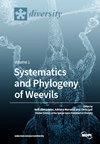火烧和模拟放牧对林地C3和C4草地斑块稳定性的影响
IF 2.1
3区 生物学
Q2 BIODIVERSITY CONSERVATION
引用次数: 0
摘要
随着木本豆科植物蜜豆科植物Prosopis glandulosa(蜜豆科植物)侵入美国南部大平原草原和牧场,C4短草Buchloe dactyloides(水牛草)和C3中草Nassella leucotricha(德州冬草)两种禾本科植物的优势地位有所上升。高产C4中草的发生和草本多样性下降。在8年的时间里,我们测量了春季修剪(模拟放牧)和夏季和/或冬季火灾处理的不同组合对这两种草的单一种植斑块稳定性的影响,目的是减少纳塞勒草和增加C4中草覆盖。所有的火灾处理都杀死了大部分随后重新发芽的Prosopis树。布克洛伊覆盖在无夹+无火处理下下降,但在夹和/或火处理下保持完整。频繁的修剪减少了纳塞拉在所有火灾处理中的覆盖。在修剪+季节交替处理中,布克洛伊对纳塞拉斑块的侵蚀最大。单火或夹火+火处理下,纳赛尔地C4中草盖度增加到15-25%;在包括夏季火在内的处理中观察到最大的收益。相比之下,布克洛伊斑块的C4中草收益较低。这些结果表明,C4中草恢复与减少纳草盖度的处理有关。本文章由计算机程序翻译,如有差异,请以英文原文为准。
Stability of C3 and C4 Grass Patches in Woody Encroached Rangeland after Fire and Simulated Grazing
As the woody legume, Prosopis glandulosa (honey mesquite) has encroached into grasslands and rangelands in the southern Great Plains, USA, two grass species, C4 shortgrass, Buchloe dactyloides (buffalograss), and C3 mid-grass, Nassella leucotricha (Texas wintergrass), have increased in dominance. Occurrence of more productive C4 mid-grasses and herbaceous diversity have declined. We measured effects of various combinations of spring clipping (to simulate cattle grazing) and summer and/or winter fire treatments on the stability of monoculture patches of these two grass species over an eight-year period, with the goal of reducing Nassella and increasing C4 mid-grass cover. All fire treatments top-killed most Prosopis trees that subsequently resprouted. Buchloe cover declined in the No Clip + No Fire treatment but remained intact with clipping and/or fire. Frequent clipping reduced Nassella cover across all fire treatments. Buchloe encroachment into Nassella patches was greatest in the Clip + Alternate Season fire treatment. C4 mid-grass cover increased to 15–25% in Nassella patches in several fire-only or Clip + Fire treatments; greatest gains were observed in treatments that included summer fire. In contrast, C4 mid-grass gains were lower in Buchloe patches. These results suggest that C4 mid-grass restoration was linked with treatments that reduced Nassella cover.
求助全文
通过发布文献求助,成功后即可免费获取论文全文。
去求助
来源期刊

Diversity-Basel
Environmental Science-Ecological Modeling
CiteScore
3.40
自引率
12.50%
发文量
925
审稿时长
11 weeks
期刊介绍:
Diversity (ISSN 1424-2818) is an international and interdisciplinary journal of science concerning diversity concept and application, diversity assessment and diversity preservation. It is focused on organismic and molecular diversity. It publishes reviews, regular research papers and short notes in the regular issues. Related news and announcements are also published. Our aim is to encourage scientists to publish their experimental and theoretical results in as much detail as possible. Therefore, there is no restriction on the length of the papers. Full experimental details must be provided so that the results can be reproduced.
 求助内容:
求助内容: 应助结果提醒方式:
应助结果提醒方式:


